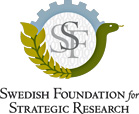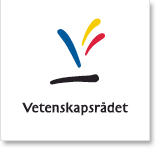Projects
This page lists projects at CAS
EU FP7 TOMSY
Period: Apr 2011 - Mar 2015
PI: Danica Kragic
Coordinator: Danica Kragic / KTH
Description:
The goal of the proposed research is to enable a generational leap in the techniques and scalability of motion synthesis algorithms by learning and exploiting appropriate topological representations and testing them on challenging domains of flexible, multi-object manipulation and close contact robot control and computer animation. Traditional motion planning algorithms have struggled to cope with both the dimensionality of the state space and generalisability of solutions in such domains. This proposal builds on existing geometric notions of topological metrics and uses data driven methods to discover multi-scale mappings that capture key invariances blending between symbolic, discrete and continuous latent space representations. We will develop methods for sensing, planning and control using such representations. This proposal, for the first time, aims to achieve this by realizing flexibility at all the three levels of sensing, representation and action generation. To this end, novel object-action representations for sensing based on manipulation manifolds will be developed and metamorphic manipulator design will be refined in a complete cycle. The results of this project will go a long way towards providing some answers to the long standing question of the 'right' representation in sensorimotor control and provide a basis for a future generation of robotic and computer vision systems capable of real-time synthesis of motion that result in fluent interaction with their environment.
Danica Kragic's TOMSY video lecture from CogSys 2012
EU FP7 eSMCs

Period: Jan 2011 - Dec 2014
PI: Danica Kragic
Coordinator: Prof. Dr. Andreas K. Engel / UKE
While the majority of current robot architectures is based on a “perception-then-action” control strategy, the eSMCs project adopts a theoretical perspective that turns this classical view upside-down and emphasizes the constitutive role of action for perception. The key concept our project is based on is that of sensorimotor contingencies, that is, law-like relations between actions and associated changes in sensory input. We will advance this concept further and suggest that actions not only play a key role for perception, but also in developing more complex cognitive capabilities. We suggest that extended sensorimotor contingencies (eSMCs) may be exploited for the definition of object concepts and action plans and that their mastery can lead to goal-oriented behaviour.
SSF RoSy

Period: 2009-2013
Dnr: RIT08-0010
PI: Danica Kragic
Description
The outcomes of RoSy will provide novel functionalities and design principles for embedded, networked and assistive robots from a systems perspective, for their robust and versatile behavior in open-ended environments providing intelligent response in unforeseen situations, and enhancing human-machine interaction. RoSy research will contribute to scientific and industrial communities while also having a clear social dimension, providing technologies that increase life quality.
VR DAM

Period: 2009-2012
Dnr: 2009-4403
PI: Danica Kragic
Description:
The main objective of this project is the development of robotic systems for dual arm object manipulation based on visual, range and haptic information. We will address three research problems:
i) Task learning based on observation of human examples; ii) A multi-agent control theoretic approach for dual arm manipulation;
iii) Sensors and system integration.
This project is primarily interested in developing the basic theoretical frameworks for these objectives. However, to show the applicability of the proposed approaches, it is important that the developed theories and individual components are evaluated both individually and at a system level. The robot’s experimental environment will be a domestic setting.
EU FP7 IP GRASP

Period: March 2008 - Feb 2012
PI: Danica Kragic
Coordinator: Danica Kragic / KTH
Description:
The aim of GRASP is the design of a cognitive system capable of performing grasping and manipulation tasks in open-ended environments, dealing with novelty, uncertainty and unforeseen situations. To meet the aim of the project, studying the problem of object manipulation and grasping will provide a theoretical and measurable basis for system design that is valid in both human and artificial systems. This is of utmost importance for the design of artificial cognitive systems that are to be deployed in real environments and interact with humans and other agents. Such systems need the ability to exploit the innate knowledge and self-understanding to gradually develop cognitive capabilities. To demonstrate the feasibility of our approach, we will instantiate, implement and evaluate our theories and hypotheses on robot systems with different embodiments and complexity.
GRASP goes beyond the classical perceive-act or act-perceive approach and implements a predict-act-perceive paradigm that originates from findings of human brain research and results of mental training in humans where the self-knowledge is retrieved through different emulation principles. The knowledge of grasping in humans can be used to provide the initial model of the grasping process that then has to be grounded through introspection to the specific embodiment. To achieve open-ended cognitive behaviour, we use surprise to steer the generation of grasping knowledge and modelling.
Danica Kragic's GRASP video lecture from CogSys 2012
EU FP7 IP CogX

Period: May 2008 - July 2012
PI: Patric Jensfelt
Coordinator: Jeremy Wyatt / BHAM
Description:
The high level aim of this project is to develop a unified theory of self-understanding and self-extension with a convincing instantiation and implementation of this theory in a robot. By self-understanding we mean that the robot has representations of gaps in its knowledge or uncertainty in its beliefs. By self-extension we mean the ability of the robot to extend its own abilities or knowledge by planning learning activities and carrying them out. At KTH we focus on research around two strands; spatial understanding and grasping
EU FP6 PACO+
PI: Jan-Olf Eklundh / Danica Kragic
EU FP6 CoSy
PI: Henrik Christensen
EU FP6 Neurobotics
PI: Henrik Christensen
EU FP6 Cogniron
PI: Henrik Christensen